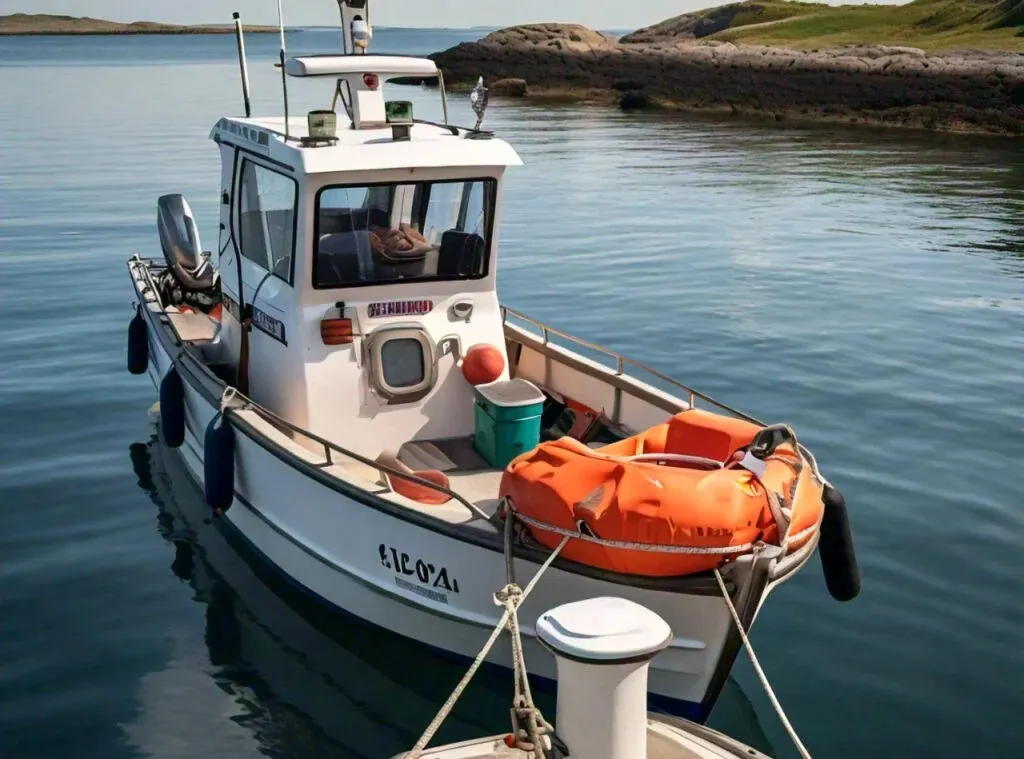
Fishing is a fantastic way to relax and connect with nature. However, safety should always be your top priority when out on the water. Understanding and equipping your fishing boat with the proper safety equipment is essential to preventing accidents and ensuring a smooth and enjoyable experience. This guide will introduce you to all the essential fishing boat safety equipment you need to stay safe.
Why Fishing Boat Safety Equipment is Important
The role of the security team
Safety equipment on a fishing boat serves several purposes. It ensures compliance with maritime laws, provides peace of mind, and, above all, can save lives in an emergency. Regardless of your experience, unexpected situations can arise, and being prepared can make all the difference.
Legal Requirements
Maritime authorities have strict regulations regarding safety equipment on board ships. These laws exist to protect boaters and ensure that every vessel is prepared for emergencies. Failure to comply with these regulations can result in fines and, more importantly, put lives at risk.
Life Jackets and Personal Flotation Devices (PFDs)
Importance of life jackets
Life jackets are the most essential safety equipment on any boat. They are designed to keep you afloat and greatly increase your chances of survival if you fall overboard. Regardless of your swimming ability, wearing a life jacket can save your life.
Different types of life jackets
- Intrinsically Buoyant (Foam) Life Jackets – These life jackets use foam to float and are always ready to use without needing to be inflated.
- Inflatable life jackets: They are more compact and comfortable but require inflation, either manually or automatically when submerged in water.
- Hybrid life jackets: combine foam and inflatable elements, providing immediate buoyancy and comfort.
Choosing the right life jacket
When selecting life jackets, make sure they are approved by the US Coast Guard. Consider the activity you will be participating in and the water conditions. Life jackets must fit correctly to be effective, so always check for the correct size and adjustability.
Fire Extinguishers
The need for fire extinguishers
Boats are susceptible to fires due to the presence of fuel and electrical systems. A fire extinguisher is an essential safety tool that helps quickly fight small fires before they get out of control.
Types of boat fire extinguishers
- Class B Fire Extinguishers: Effective against fires involving flammable liquids such as gasoline and oil.
- Class C fire extinguishers: suitable for electrical fires, common on boats.
Maintenance tips
Periodically inspect your fire extinguisher for signs of wear. Make sure it is fully charged and easy to access. Replace it if it shows signs of damage or has passed its expiration date.
Emergency Signaling Devices
Visual signaling devices.
- In an emergency, being able to ask for help is essential. Visual signaling devices can attract attention and direct rescuers to your location.
- Flares: Flares are very visible, especially at night. They should be part of your emergency kit.
- Signal mirrors: During the day, signal mirrors can reflect sunlight to create a flash of light that attracts attention.
Auditory signaling devices.
Audible signals are essential, especially in low visibility conditions.
- Whistles: They are simple but effective. A loud whistle can alert nearby ships to your presence.
- Air horns: They emit a louder sound that can be heard at greater distances.
First Aid Kit
Importance of a first aid kit
- A complete first aid kit is essential for dealing with injuries that may occur in the water. It allows you to provide immediate care and prevent minor injuries from becoming serious.
What to include in your first aid kit
- Bandages and gauze: To cover wounds and stop bleeding.
- Antiseptic Wipes: To clean cuts and prevent infections.
- Tweezers and scissors: for removing splinters and cutting tape or bandages.
- Painkillers: For headaches, aches, and minor pains.
- Emergency blanket: To prevent hypothermia in case of prolonged exposure to cold.
- CPR Mask: To provide safe and effective mouth-to-mouth resuscitation.
Navigation lights
Why navigation lights are crucial
Navigation lights are required for navigation in low-light conditions. They ensure your boat is visible to others, preventing collisions and making nighttime navigation safer.
Types of navigation lights
- Red and Green Side Lights: Indicate the port (left) and starboard (right) sides of the boat.
- White rear light: Indicates the rear of the boat.
- Full White Light: Visible from any angle, used when the boat is at anchor.
VHF Marine Radio
Importance of VHF marine radios
A VHF marine radio is an essential communication tool on the water. It allows you to send distress signals, receive weather updates, and communicate with other ships and coast guards.
How to use a VHF marine radio
Familiarize yourself with basic operations and the emergency channel (usually channel 16). Practice using the radio to be prepared in case of emergency.
Bilge Pump
The role of a bilge pump
A bilge pump removes water that accumulates in the bilge, preventing your boat from sinking. This is especially important in rough water conditions or if your boat is leaking.
Types of bilge pumps
- Manual Bilge Pumps – Require manual operation and are useful as a backup solution.
- Electric Bilge Pumps: Activate automatically when water is detected, providing continuous protection.
Anchor and Rope
Why an anchor is essential
An anchor keeps your boat in place, preventing it from drifting due to wind or current. This is essential for both safety and stability while fishing.
Choose the right anchor
- Fluke anchors: Light and effective on sandy or muddy bottoms.
- Plow Anchors: Heavier and suitable for a variety of seabeds.
Choose the right rope
Use a strong, durable rope that matches the size of your boat and anchor. Make sure it is long enough to secure the boat at different depths.
Conclusion: Be Prepared for a Safe Fishing Experience
Equipping your fishing boat with the proper safety equipment is essential for a safe and enjoyable experience on the water. From life jackets to navigation lights, each piece of equipment plays a vital role in keeping you safe. Check and maintain your equipment regularly and always be prepared for the unexpected.
FAQs
1. What is the most important safety equipment for a fishing boat?
Life jackets, fire extinguishers, and emergency signaling devices are among the most critical safety equipment. They help ensure safety and compliance with maritime regulations.
2. How often should I inspect my safety equipment?
You should inspect your safety equipment before every trip. Check for any damage, ensure everything is functioning properly, and replace items as needed.
3. Are there specific legal requirements for fishing boat safety equipment?
Yes, there are specific legal requirements that vary by region. Generally, these include life jackets, fire extinguishers, and navigation lights. Always check local regulations to ensure compliance.
4. Can I use any life jacket on my fishing boat?
Life jackets must be U.S. Coast Guard-approved and suitable for the activity and water conditions. Ensure they fit properly and are in good condition.
5. Why is a VHF marine radio important?
A VHF marine radio is essential for communication with other boats and emergency services. It allows you to send distress signals and receive critical updates, such as weather warnings.
 The Boat Journey
The Boat Journey
Leave a Reply